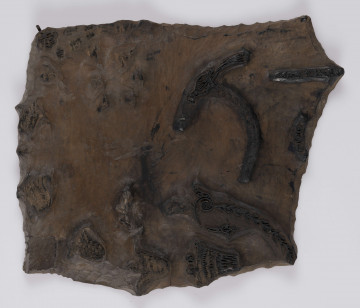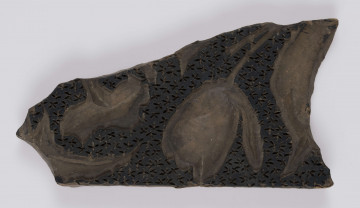
Block for printing on textile
1901 — 1950
National Museum in Lublin
Part of the collection: Fabric printing matrices
Textile printing is a centuries-old method of decorating fabrics. Printed textiles were wildly popular thanks to, among others, their ability to imitate the expensive precious fabrics, such as satin or brocade. Since the Middle Ages, textiles coming from the East were fashionable in Western Europe. In the medieval times and Renaissance, the fabrics from the Middle East were highly valued, while in the baroque period and later the materials coming from India and China grew in popularity. To meet the demanding expectations of their customers, the fabric dyers had to follow the latest trends and adjust the patterns they offered accordingly. This explains why one can find designs inspired by distant cultures on the local printing stamps. In the ethnographic collection of the National Museum in Szczecin there is a stamp in the shape of an Indian palmette, which is a motif of a fan-shaped, stylised palm leaf. It is filled with symmetrically arranged decorative elements. One of them is a distinctive paisley motif of a teardrop with a curved upper end. The symbolic meaning of this pattern is not entirely clear, but it is presumed that it could be based on a mango fruit, almond or a cypress leaf, considered to be a symbol of life and eternity in the beliefs of eastern nations. The paisley motif was very sought after by recipients of printed fabrics which can be deduced from the fact that many variations of this pattern can be found on the printing stamps.
Author / creator
Dimensions
cały obiekt: height: 4,4 cm, width: 23,6 cm
Object type
matrix
Creation time / dating
Creation / finding place
Identification number
Location / status

1901 — 1950
National Museum in Lublin

1901 — 1950
National Museum in Lublin

1901 — 1950
National Museum in Lublin
DISCOVER this TOPIC
Museum of King Jan III's Palace at Wilanów
DISCOVER this PATH
Educational path